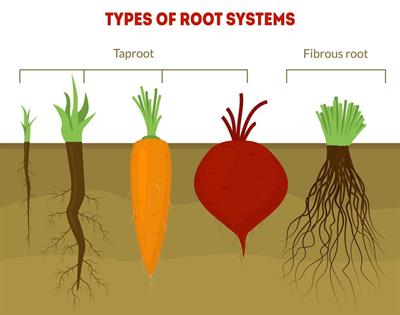PDF chapter test TRY NOW
Roots are the vital part of the plant present in the soil, which anchors or grips the plant into the ground.
- Grips or fixes the plant to the ground.
- Absorbs and transports water and minerals from the soil to other parts of the plant.
- Helps to hold the soil, prevents soil erosion and also in soil conservation.
Important!
In some plants, roots store food. And, the examples of such roots that are consumed include Radish, Carrot, Turnip, Potato, Sweet potato, and Beetroot.
The major types of roots are:
- Taproot
- Fibrous root
Taproot
Example:
Neem tree, Mango tree, Turnip, Carrot, Beetroot are examples of plants that have taproots.
Fibrous root
Example:
Paddy, Corn, Maize, Grass are examples of plants that have fibrous roots.

Important!
The leaf venation and the type of the root is associated with each other. The plants having parallel venation leaves have fibrous roots, and plants with the reticulate venation leaves have taproots.
Reference:
https://studiousguy.com/taproot-system-types-modifications-examples/
https://www.shutterstock.com/image-vector/plants-different-types-root-systems-tap-1185197410
